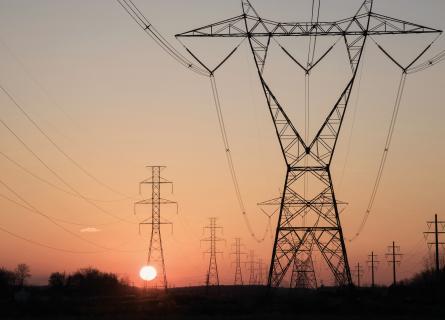
How the energy crisis has changed the level of risk associated with the Nordic district heating sector
The energy crisis has also challenged the district heating sector, where the rapid change in the market has affected the profitability of companies.
Risk management, especially in connection with investments, is now more important than ever.
Challenging market situation for district heating companies in the Nordics
District heating is an important part of energy systems in the Nordics, where it accounts for a substantial part of the heat supply and in many cities with low emissions. The district heating sector has traditionally enjoyed steady profit, and in general, low business risks, as the client base is rather steady and fuel market risks have been managed with versatile fuel sourcing and flexible fuel options. This has also supported growth in the district heating sector in the Nordics without separate support and rather light regulation.
In the Nordics, district heat prices follow the cost base changes, but recent years have demonstrated that markets can change so rapidly that prices cannot be adjusted accordingly with negative impacts on companies' profitability. The challenges might not stop there: also long-term competitiveness is challenged due to increasing competition in the heating markets and expected continued uncertainty in the availability and prices of fuels and electricity prices.
District heating has faced short term profitability challenges amid the energy crisis
District heating is facing fierce competition in the heating markets, where building scale heating solutions are becoming attractive for customers. So far, the customer churn has been rather slow in district heating, but this shouldn’t be taken for granted in the future. Sustainability and carbon neutrality targets, price competition, availability of new options and general perception of the district heating sector impact customers' choices of heating system. Even if district heating is based on renewable and recycled energy and offers a truly sustainable heat source, many customers prefer building level solutions e.g., based on heat pumps over district heating. In addition, increased capital costs have created challenges for some companies in the capital intensive district heating sector.

In the longer term, the cost of combustion-based heat production is likely to be increasing faster than electricity-based heating solutions
District heat production in the Nordics has quickly been able to move away from fossil fuels to renewable options. Even when the use of recovered heat from industries and surroundings is increasing, much of the heat production is still based on combustion of fuels, especially biomass and different waste fractions. In the energy crisis of 2022, these fuel prices increased rapidly and availability was challenged. As of now, it looks like the prices are not recovering to the earlier levels.
Besides fuel market prices, regulatory development creates further uncertainties for heat producers. These include discussions around taxation on biomass and waste, the treatment of waste-to-energy in the emissions trading sector, as well as incentives for building level heating solutions.
Electrification of heat production may support long-term profitability and reduce risks – but this is not a silver bullet for all producers
Many district heat companies have invested in electricity-based heat production lately, including electric boilers and many types of heat pumps. Electrification of district heating assets is indeed becoming a very attractive option due to changes in biomass prices versus electricity prices and this trend seems to be remaining. Electrification of district heat production with flexible capacity is also beneficial for the whole energy system, as it allows sector coupling and optimisation of production based on energy prices and availability. However, these investments are not automatically feasible in the unsecure markets and require additional funding for investments.
Also, regulation is guiding the investments towards electricity-based solutions, for instance, through electricity taxation for district heat production. In Finland, the electricity taxation for district heat production was reduced to the lower category II, whereas in Sweden, the district heat producers still often pay a higher tax for electricity, which may impact the profitability of some investments. There are also new market opportunities, such as utilisation of excess heat from growing hydrogen production and development of CO2 capture and utilisation (CCUS) markets, which offers the possibility for negative emissions and/or new revenue streams.

Managing risks with a flexible portfolio supports maintaining long term profitability
In this uncertain market situation, it is essential to take a wider look at district heat production with a whole portfolio view, and analyse the risks and opportunities in a large number of different scenarios. There is no room for unproductive investments. In many cases, risks can be better managed when investing in several smaller, flexible options than having one large heat production plant.
Decreasing electricity prices and increasing volatility are creating an opportunity for a district heating producer, who can utilise electricity when the prices are at their lowest. Optimisation of production and smooth change between the production sources based on market prices is key to a successful district heating company. At the same time, the solutions and concepts with higher fuel efficiencies, such as utilisation of waste heat, are very attractive for the district heating producers.
The district heating production fleet has to be flexible and versatile in order to survive in the rapidly changing circumstances. By utilising excess heat from different sources, district heating will be part of a sustainable energy system and society and will reach the targets of carbon neutrality and biodiversity. It is also worth considering reducing investment size in order to avoid very large and capex intensive production assets. Leveraging lifetime extensions is to be considered as well, having risk mitigation in focus.
District heating companies operate always in a unique context to them and concrete solutions will vary. AFRY Management Consulting is the professional and experienced partner for a district heating company to tackle the challenges in the changing energy markets. We are a unique partner in district heating with our vast experience in energy market analysis and strategic advisory services. Our large international network offers a wide perspective on the markets and ensures the best possible support for each customer case.





